Let's talk about viscose fabric today. It’s everywhere in the fashion industry, known for its silk-like feel and versatile applications.
But, I’ve found myself pondering, “why is viscose bad?”
Viscose, a semi-synthetic fiber, is lauded for its ability to mimic the textures of luxurious fabrics, making it a prevalent choice in our wardrobes. Originating from wood pulp, it’s transformed into threads we see in many garments. It’s this transformation process that’s sparked my curiosity and concern, as it involves the use of toxic chemicals.
I’ve been exploring the intricate world of viscose, trying to understand its role and impact in the realm of sustainability. It’s fascinating how this fabric, derived from cellulose fibers, has become a staple in the fashion world yet raises so many questions about its environmental footprint.
In this piece, I’ll share my insights on viscose fabric, its characteristics, and its comparisons with other fabrics. We’ll explore whether the popularity and versatility of rayon viscose are overshadowed by its environmental repercussions.
So, let’s embark on this journey together and unravel the truths behind viscose.
What is Viscose Fabric?
In simple terms, viscose, often referred to as viscose rayon, is a type of semi-synthetic fabric. It’s born from a combination of natural and man-made components, a concoction of cellulose from wood pulp and chemicals.
This blend is what gives viscose its unique characteristics, making it a favorite in the production of various garments.
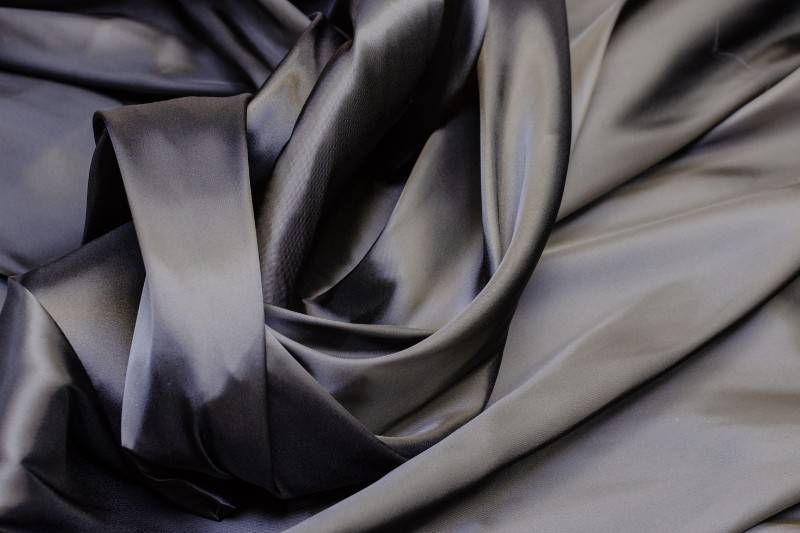
The journey of viscose began with the first commercial viscose rayon and fiber being produced in the early 1900s. It was a breakthrough in the textile industry, offering a cheaper alternative to silk.
The production of viscose has evolved since.
Viscose factories strived to refine the viscose production process, aiming to produce more sustainable viscose options like bamboo viscose.
Conventional viscose, however, has been under scrutiny for its environmental impact. The viscose production involves the use of harmful chemicals, raising questions about its sustainability. I’ve been exploring whether there are more sustainable viscose options available, and how they compare to the conventional viscose we commonly encounter in the market.
Viscose material, despite its controversial production process, continues to be a popular choice in the fashion industry due to its versatility and the silk-like feel it offers to viscose garments.
It’s this dichotomy between the goodness of viscose fabric and the environmental concerns surrounding its production that I find intriguing.
What is Viscose Made Of?
Diving into the composition of viscose, it’s fascinating to see how this semi-synthetic fiber is created. It’s a concoction that marries natural elements with synthetic fibers, giving birth to a fabric that’s both versatile and contentious.
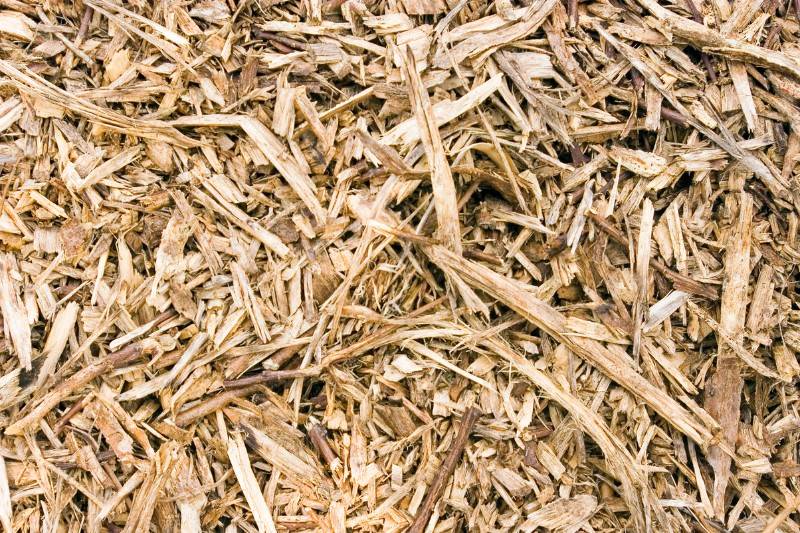
Here’s a simplified breakdown of the production of viscose:
- Wood Pulp Production: The journey begins with the extraction of cellulose from wood pulp, primarily sourced from trees like pine, spruce, or beech. This is one of the primary raw materials.
- Chemical Treatment: The extracted cellulose is then treated with a chemical solution, involving many toxic chemicals, to create a viscous solution.
- Spinning: This solution is then spun to form fibers, which are subsequently washed to remove nearly all the chemicals used in the process.
- Final Product: The fibers are then converted into yarn, which is used to create the final viscose fabric.
This manufacturing process, particularly the chemically intensive steps, has been a focal point of environmental concerns.
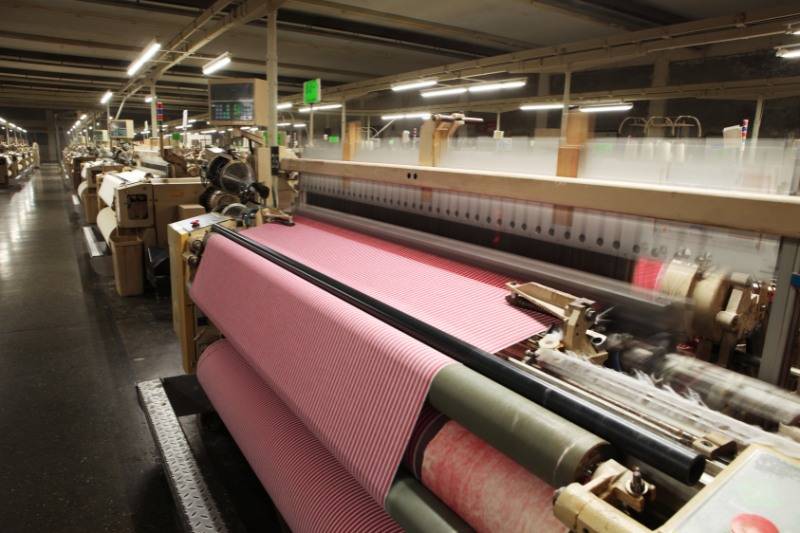
The waterways surrounding production plants are often impacted, raising questions about the sustainability of such chemically intensive manufacturing processes.
I’ve been researching the advancements in this field, exploring how the industry is evolving to mitigate the environmental impact. The advent of a closed-loop process is a promising development, aiming to recapture and reuse the chemicals involved in the viscose process, making fabric production more eco-friendly.
Environmental Impact: Is Viscose Sustainable?
Viscose, despite its origin from wood pulp, is far from being the eco-friendly fabric it often claims to be. The production of viscose is marred by a plethora of environmental concerns, primarily stemming from the extensive use of harmful chemicals and the colossal consumption of water.
Producing viscose rayon is a chemically intensive manufacturing process.
The production process of viscose involves chemicals like carbon disulfide, sodium hydroxide, and sulfuric acid, all of which are notorious for their hazardous nature.
Carbon disulfide, for instance, is linked to serious health conditions like nerve damage and psychiatric disorders in humans. And, it’s a major pollutant released during production.
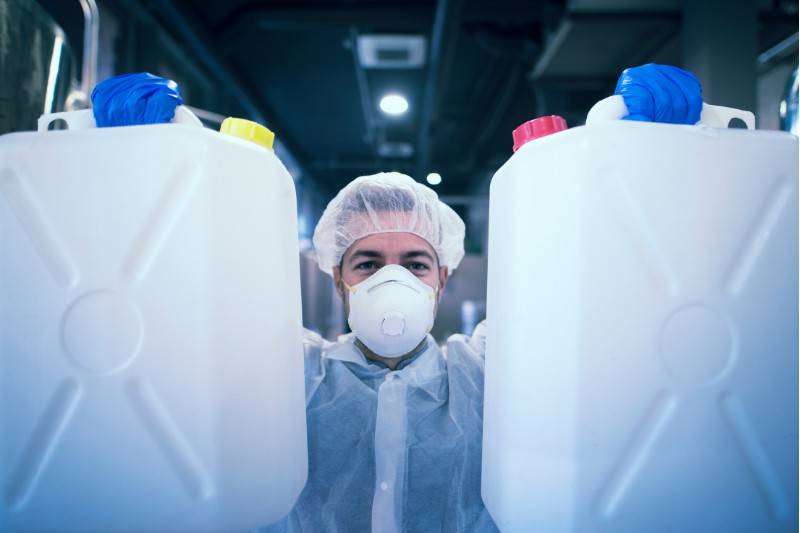
To put the environmental impact of viscose into perspective.
Consider this: the production of just one ton of viscose utilizes approximately 30 tons of water and releases around 15 tons of harmful emissions, including the aforementioned toxic chemicals. These startling figures illustrate the severe environmental degradation caused by viscose production, emphasizing the urgent need for sustainable practices in the industry.
Moreover, the deforestation driven by the demand for wood pulp for viscose is leading to a loss of biodiversity, ecosystem imbalance, and climate change acceleration. The relentless clearing of forests for viscose production is depleting our planet’s lungs, leaving behind a legacy of environmental devastation and loss of wildlife habitats.
The environmental toll of viscose is alarmingly high, overshadowing the benefits of its texture and versatility. It’s crucial for us to face the grim truths of viscose production and its detrimental effects on our planet. The fabric, seemingly harmless, is, in reality a silent ecological assailant.
Plus, it's only fueling the devil we know as the growing fast fashion industry.
It’s time we reconsider its value in the textile industry and explore genuinely sustainable and eco-friendly alternatives.
Characteristics of Viscose Fabric
Viscose, despite the environmental concerns surrounding its production, is renowned for its unique properties and versatile applications. It’s a fabric that has found its way into various aspects of our lives, from clothing to home textiles.
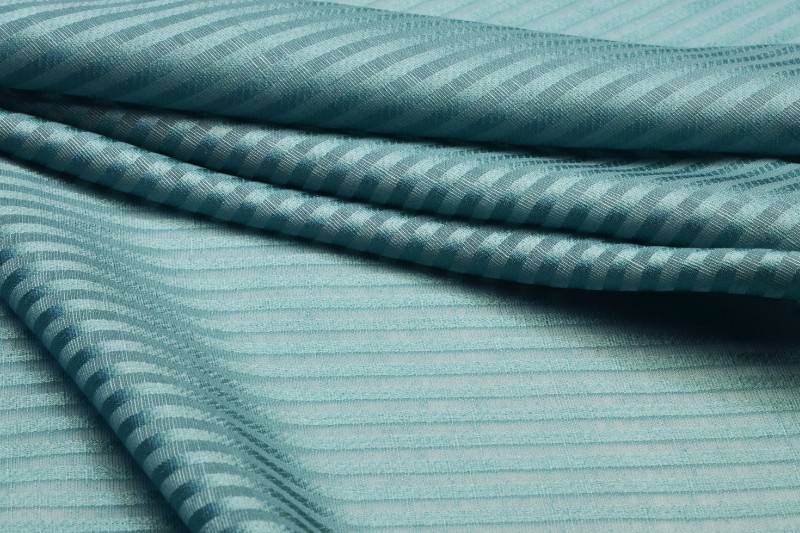
Here, I’ll outline the key characteristics and common uses of viscose:
Properties of Viscose
- Soft and Silky: Viscose has a luxurious feel, resembling the texture of silk.
- Breathable: It allows air to pass through, making it comfortable to wear.
- Moisture Absorbent: It can absorb moisture effectively, making it suitable for summer wear.
- Drapes Well: The fabric flows and drapes beautifully, enhancing the appearance of garments.
- Biodegradable: Viscose can decompose naturally, though the environmental benefit is often offset by its production process.
Common Uses of Viscose
- Clothing: Viscose is widely used in the production of dresses, skirts, shirts, and more due to its silk-like feel.
- Home Textiles: It’s found in linens, upholstery, and curtains.
- Industrial Uses: Viscose rayon is used in the production of cords and nets.
Is Viscose Stretchy?
When it comes to the elasticity of viscose, it’s not inherently stretchy.
However, when blended with other fibers like elastane, it can have a considerable amount of stretch, making it suitable for form-fitting garments.
For instance, a dress made from a blend of viscose and elastane will have more give and adapt better to the body’s contours, providing comfort and flexibility.
Pros and Cons of Viscose Fabric
Viscose comes with its own set of advantages and disadvantages that need to be weighed carefully.

Here, I’ll present a balanced view of the pros and cons of this innovative fabric:
Advantages of Viscose
- Silk-Like Feel: Viscose is valued for its softness and is often used as an alternative to silk, ideal for soft blouses and drapey summer dresses.
- Versatility: It’s a versatile fabric used in various products, from clothing to home textiles.
- Breathability: Viscose is a breathable fabric, making it a preferred choice for summer wear.
- Biodegradability: Being a plant-based fiber, it is biodegradable, decomposing naturally over time.
- Cost-Effective: Viscose can be manufactured cheaply, offering a more affordable alternative to natural silk and organic cotton.
Disadvantages of Viscose
- Environmental Impact: The production of viscose is chemically intensive, involving substances like carbon disulfide, impacting the environment and textile workers.
- Deforestation: The need for wood fiber in viscose production leads to deforestation, affecting endangered forests and vulnerable animal populations.
- Sustainability Concerns: Despite being made from natural materials like wood and sugar cane, the unsustainable manufacturing practices overshadow its eco-friendly origins.
- Supply Chain Issues: The viscose supply chain is often opaque, with linked fashion brands sometimes unaware of the environmental and social impacts of viscose production in their supply chain.
In the pursuit of more sustainable alternatives, it’s crucial to consider both the benefits and the drawbacks of viscose.
The industry is evolving, with efforts being made to develop sustainable manufacturing practices and alternative fibers that have less environmental impact, using sustainable wood sources and consuming half as much energy in the production process.
“Viscose, with its pulpy viscous substance derived from cellulosic fibres, presents a paradox. It’s a fabric that offers the luxury of natural silk and the affordability of synthetic materials, but its production process raises serious environmental and ethical concerns.”
Julie Holmes, Textile Industry Expert
Viscose vs. Cotton vs. Polyester
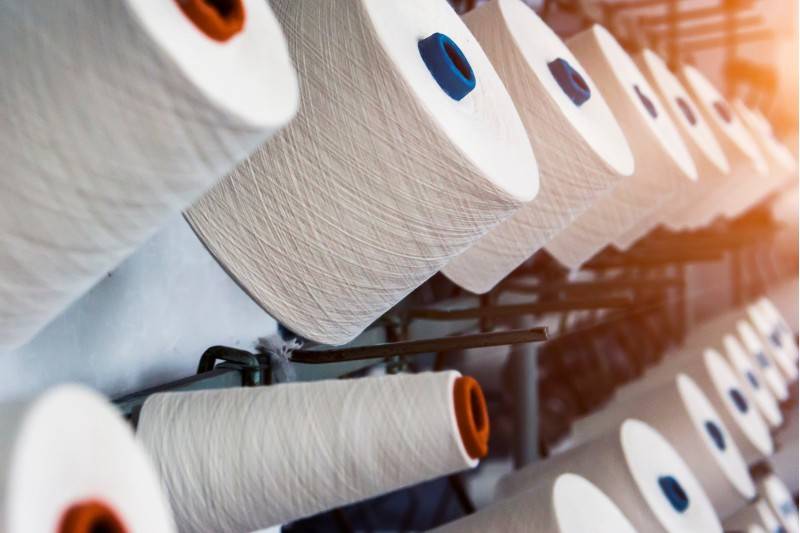
When exploring the world of fabrics, it’s crucial to understand how different materials stack up against each other.
Here, I’ll compare viscose to cotton and polyester, focusing on their environmental impact, sustainability, and characteristics.
Viscose vs Cotton
Environmental Impact:
Viscose: The production of viscose is known for its chemically intensive processes, involving harmful substances like carbon disulphide, impacting both the environment and textile workers in viscose factories.
Cotton: Cotton, especially non-organic, has its environmental concerns, primarily due to the extensive use of water and pesticides in its cultivation.
Sustainability:
Viscose: Despite being made from cellulose material, the unsustainable manufacturing practices of viscose overshadow its natural origins.
Cotton: Organic cotton is a more sustainable alternative, grown without harmful chemicals and using less water.
Characteristics:
Viscose: Offers a silk-like feel and is good for draping, making it suitable for luxury garments.
Cotton: Known for its breathability and softness, cotton is versatile and used widely in various products.
Viscose vs Polyester
Environmental Impact:
Viscose: The production involves the release of toxic chemicals and leads to deforestation, affecting the ecosystems around the production areas.
Polyester: It is a synthetic fiber derived from petroleum, and its production is energy-intensive and releases greenhouse gases.
Sustainability:
Viscose: The search for sustainable manufacturing practices in viscose production is ongoing, with some advancements in reducing its environmental footprint.
Polyester: Recycling innovations are making polyester more sustainable, with recycled polyester reducing the dependency on virgin petroleum.
Characteristics:
Viscose: It has a luxurious, silky feel and is breathable, suitable for summer wear.
Polyester: It is durable, resistant to wrinkles and shrinking, but can be less breathable.
“Each fabric, be it viscose, cotton, or polyester, has its unique set of properties and environmental implications. The key is to strike a balance between functionality, aesthetics, and sustainability, choosing materials that align with ethical and environmental values.”
Kevin Whipps, Textile Specialist
Conclusion: The Verdict on Viscose
As we navigate through the intricate world of textiles, viscose stands out as a material of paradoxes.
It’s a fabric that offers the luxury of silk and the comfort of cotton, but its production is marred by severe environmental repercussions and ethical dilemmas.
Viscose, despite its natural origins from wood pulp, is far from being the eco-friendly fabric it often purports to be. The production process of viscose is chemically intensive, involving the use of harmful substances like carbon disulfide, which have detrimental effects on the environment and pose serious health risks to textile workers.
The release of these toxic chemicals during production leads to pollution of air and waterways, impacting ecosystems and communities around viscose factories.
Moreover, the demand for wood pulp in viscose production drives deforestation, leading to loss of biodiversity and disruption of natural habitats. This, coupled with the often shady supply chains and lack of transparency in manufacturing practices, raises serious concerns about the sustainability and ethicality of viscose production.
However, the textile industry is evolving, and efforts are underway to mitigate the environmental impact of viscose. Sustainable manufacturing practices, innovations in recycling, and the development of eco-friendly alternatives are steps in the right direction, offering hope for a more sustainable future in textile production.
Green Blog
Why is Viscose Bad for Sustainability? Behind the Silky Veil
Written by : Samira Tasneem | Last Updated: November 1, 2023
Contents
Think viscose is eco-friendly due to its natural roots? Think again!
Let's talk about viscose fabric today. It’s everywhere in the fashion industry, known for its silk-like feel and versatile applications.
But, I’ve found myself pondering, “why is viscose bad?”
Viscose, a semi-synthetic fiber, is lauded for its ability to mimic the textures of luxurious fabrics, making it a prevalent choice in our wardrobes. Originating from wood pulp, it’s transformed into threads we see in many garments. It’s this transformation process that’s sparked my curiosity and concern, as it involves the use of toxic chemicals.
I’ve been exploring the intricate world of viscose, trying to understand its role and impact in the realm of sustainability. It’s fascinating how this fabric, derived from cellulose fibers, has become a staple in the fashion world yet raises so many questions about its environmental footprint.
In this piece, I’ll share my insights on viscose fabric, its characteristics, and its comparisons with other fabrics. We’ll explore whether the popularity and versatility of rayon viscose are overshadowed by its environmental repercussions.
So, let’s embark on this journey together and unravel the truths behind viscose.
What is Viscose Fabric?
In simple terms, viscose, often referred to as viscose rayon, is a type of semi-synthetic fabric. It’s born from a combination of natural and man-made components, a concoction of cellulose from wood pulp and chemicals.
This blend is what gives viscose its unique characteristics, making it a favorite in the production of various garments.
The journey of viscose began with the first commercial viscose rayon and fiber being produced in the early 1900s. It was a breakthrough in the textile industry, offering a cheaper alternative to silk.
The production of viscose has evolved since.
Viscose factories strived to refine the viscose production process, aiming to produce more sustainable viscose options like bamboo viscose.
Conventional viscose, however, has been under scrutiny for its environmental impact. The viscose production involves the use of harmful chemicals, raising questions about its sustainability. I’ve been exploring whether there are more sustainable viscose options available, and how they compare to the conventional viscose we commonly encounter in the market.
Viscose material, despite its controversial production process, continues to be a popular choice in the fashion industry due to its versatility and the silk-like feel it offers to viscose garments.
It’s this dichotomy between the goodness of viscose fabric and the environmental concerns surrounding its production that I find intriguing.
What is Viscose Made Of?
Diving into the composition of viscose, it’s fascinating to see how this semi-synthetic fiber is created. It’s a concoction that marries natural elements with synthetic fibers, giving birth to a fabric that’s both versatile and contentious.
Here’s a simplified breakdown of the production of viscose:
This manufacturing process, particularly the chemically intensive steps, has been a focal point of environmental concerns.
The waterways surrounding production plants are often impacted, raising questions about the sustainability of such chemically intensive manufacturing processes.
I’ve been researching the advancements in this field, exploring how the industry is evolving to mitigate the environmental impact. The advent of a closed-loop process is a promising development, aiming to recapture and reuse the chemicals involved in the viscose process, making fabric production more eco-friendly.
Environmental Impact: Is Viscose Sustainable?
Viscose, despite its origin from wood pulp, is far from being the eco-friendly fabric it often claims to be. The production of viscose is marred by a plethora of environmental concerns, primarily stemming from the extensive use of harmful chemicals and the colossal consumption of water.
Producing viscose rayon is a chemically intensive manufacturing process.
The production process of viscose involves chemicals like carbon disulfide, sodium hydroxide, and sulfuric acid, all of which are notorious for their hazardous nature.
Carbon disulfide, for instance, is linked to serious health conditions like nerve damage and psychiatric disorders in humans. And, it’s a major pollutant released during production.
To put the environmental impact of viscose into perspective.
Consider this: the production of just one ton of viscose utilizes approximately 30 tons of water and releases around 15 tons of harmful emissions, including the aforementioned toxic chemicals. These startling figures illustrate the severe environmental degradation caused by viscose production, emphasizing the urgent need for sustainable practices in the industry.
Moreover, the deforestation driven by the demand for wood pulp for viscose is leading to a loss of biodiversity, ecosystem imbalance, and climate change acceleration. The relentless clearing of forests for viscose production is depleting our planet’s lungs, leaving behind a legacy of environmental devastation and loss of wildlife habitats.
The environmental toll of viscose is alarmingly high, overshadowing the benefits of its texture and versatility. It’s crucial for us to face the grim truths of viscose production and its detrimental effects on our planet. The fabric, seemingly harmless, is, in reality a silent ecological assailant.
Plus, it's only fueling the devil we know as the growing fast fashion industry.
It’s time we reconsider its value in the textile industry and explore genuinely sustainable and eco-friendly alternatives.
Characteristics of Viscose Fabric
Viscose, despite the environmental concerns surrounding its production, is renowned for its unique properties and versatile applications. It’s a fabric that has found its way into various aspects of our lives, from clothing to home textiles.
Here, I’ll outline the key characteristics and common uses of viscose:
Properties of Viscose
Common Uses of Viscose
Is Viscose Stretchy?
When it comes to the elasticity of viscose, it’s not inherently stretchy.
However, when blended with other fibers like elastane, it can have a considerable amount of stretch, making it suitable for form-fitting garments.
For instance, a dress made from a blend of viscose and elastane will have more give and adapt better to the body’s contours, providing comfort and flexibility.
Pros and Cons of Viscose Fabric
Viscose comes with its own set of advantages and disadvantages that need to be weighed carefully.
Here, I’ll present a balanced view of the pros and cons of this innovative fabric:
Advantages of Viscose
Disadvantages of Viscose
In the pursuit of more sustainable alternatives, it’s crucial to consider both the benefits and the drawbacks of viscose.
The industry is evolving, with efforts being made to develop sustainable manufacturing practices and alternative fibers that have less environmental impact, using sustainable wood sources and consuming half as much energy in the production process.
“Viscose, with its pulpy viscous substance derived from cellulosic fibres, presents a paradox. It’s a fabric that offers the luxury of natural silk and the affordability of synthetic materials, but its production process raises serious environmental and ethical concerns.”
Julie Holmes, Textile Industry Expert
Viscose vs. Cotton vs. Polyester
When exploring the world of fabrics, it’s crucial to understand how different materials stack up against each other.
Here, I’ll compare viscose to cotton and polyester, focusing on their environmental impact, sustainability, and characteristics.
Viscose vs Cotton
Environmental Impact:
Viscose: The production of viscose is known for its chemically intensive processes, involving harmful substances like carbon disulphide, impacting both the environment and textile workers in viscose factories.
Cotton: Cotton, especially non-organic, has its environmental concerns, primarily due to the extensive use of water and pesticides in its cultivation.
Sustainability:
Viscose: Despite being made from cellulose material, the unsustainable manufacturing practices of viscose overshadow its natural origins.
Cotton: Organic cotton is a more sustainable alternative, grown without harmful chemicals and using less water.
Characteristics:
Viscose: Offers a silk-like feel and is good for draping, making it suitable for luxury garments.
Cotton: Known for its breathability and softness, cotton is versatile and used widely in various products.
Viscose vs Polyester
Environmental Impact:
Viscose: The production involves the release of toxic chemicals and leads to deforestation, affecting the ecosystems around the production areas.
Polyester: It is a synthetic fiber derived from petroleum, and its production is energy-intensive and releases greenhouse gases.
Sustainability:
Viscose: The search for sustainable manufacturing practices in viscose production is ongoing, with some advancements in reducing its environmental footprint.
Polyester: Recycling innovations are making polyester more sustainable, with recycled polyester reducing the dependency on virgin petroleum.
Characteristics:
Viscose: It has a luxurious, silky feel and is breathable, suitable for summer wear.
Polyester: It is durable, resistant to wrinkles and shrinking, but can be less breathable.
“Each fabric, be it viscose, cotton, or polyester, has its unique set of properties and environmental implications. The key is to strike a balance between functionality, aesthetics, and sustainability, choosing materials that align with ethical and environmental values.”
Kevin Whipps, Textile Specialist
Conclusion: The Verdict on Viscose
As we navigate through the intricate world of textiles, viscose stands out as a material of paradoxes.
It’s a fabric that offers the luxury of silk and the comfort of cotton, but its production is marred by severe environmental repercussions and ethical dilemmas.
Viscose, despite its natural origins from wood pulp, is far from being the eco-friendly fabric it often purports to be. The production process of viscose is chemically intensive, involving the use of harmful substances like carbon disulfide, which have detrimental effects on the environment and pose serious health risks to textile workers.
The release of these toxic chemicals during production leads to pollution of air and waterways, impacting ecosystems and communities around viscose factories.
Moreover, the demand for wood pulp in viscose production drives deforestation, leading to loss of biodiversity and disruption of natural habitats. This, coupled with the often shady supply chains and lack of transparency in manufacturing practices, raises serious concerns about the sustainability and ethicality of viscose production.
However, the textile industry is evolving, and efforts are underway to mitigate the environmental impact of viscose. Sustainable manufacturing practices, innovations in recycling, and the development of eco-friendly alternatives are steps in the right direction, offering hope for a more sustainable future in textile production.
Samira Tasneem
Samira is an Electronics and Communications Engineer by profession, but deep inside, her heart is a nomad! She's a state champion debater, a public speaker, a scriptwriter, a theater actress, but most importantly — A GREEN CITIZEN! She thinks of herself as a storyteller who thrives on enjoying the life at fullest and telling everyone the tales of life.
Quick Links
Green Living Guides
Green Jobs
Inspiring Green News
Green Directory
Green Store
Electronics Recycling
Category: Green Blog, Lifestyle, Sustainable Living